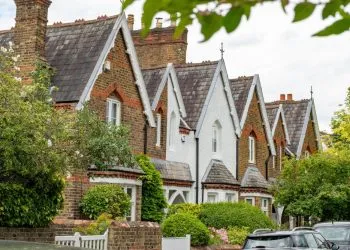With the demise of Help to Buy looming, buyers may be looking for other support schemes to help them realise their homeownership dreams. Paul Zammit explains how Right to Buy could help council tenants overcome house price challenges
 Despite the challenges facing the economy, house prices appear to be in rude health. The latest house price index from the Office for National Statistics shows that in the year to July 2022 house prices jumped by a frankly incredible 15.5%.
Despite the challenges facing the economy, house prices appear to be in rude health. The latest house price index from the Office for National Statistics shows that in the year to July 2022 house prices jumped by a frankly incredible 15.5%.
That means that the average property is now worth £292,000, having jumped by £39,000 over the past 12 months.
That may be positive news for those already on the housing ladder, but not so much for those who still aspire to own their own home.
After all, the rate at which property is growing in value does make home ownership far more difficult to achieve for would-be first-time buyers.
The need to save a sufficient deposit is already testing when prices are rising, let alone when property values grow far more quickly than potential buyers are able to set money aside to use as a deposit.
What’s more, one of the most high-profile schemes designed to assist buyers in overcoming this challenge – the Help to Buy scheme – is to close shortly.
Thankfully however there are other schemes which can also provide a helping hand, which perhaps aren’t as well known, such as the Right to Buy scheme.
What is the Right to Buy scheme?
The Right to Buy scheme is aimed at council tenants, allowing them to purchase their property at a discount.
Not everyone is eligible – the home will need to be self-contained, and it will have to be your main home. However, the discount on offer can be substantial, making homeownership far more achievable.
There are different factors that go into determining precisely what discount you’ll qualify for, such as how long you’ve been a tenant and the value of the property.
However, the maximum discount is set at £116,200 in London and £87,200 across the rest of England, which also increases in line with inflation each year.
The Right to Buy process
Making use of the scheme is a little different from purchasing a property in a traditional way.
Instead of making an outright offer, you will first have to apply to your landlord. They then have four weeks to reply to confirm whether you do or do not have the right to buy your home (extending to eight weeks if you have been with your current landlord for less than three years).
If you do have the right, then the landlord will set out the value of the property, the discount, the price you will pay in order to purchase, as well as a description of the property and any structural issues that you might need to be aware of.
You’ll then have 12 weeks to accept the offer and crack on with purchasing your home.
Extending the Right to Buy scheme
Earlier this year the government announced plans to extend the Right to Buy scheme, opening it up to tenants of housing associations as well as councils.
The idea – which has been floated by previous governments over the last decade too – is that by doing so, a further 2.5 million people may be able to get onto the housing ladder in a more affordable way.
However, the extension has not gone live yet, so housing association tenants will have to wait a little longer before they too can take advantage of the scheme.
Finding a Right to Buy mortgage
One of the big selling points of making use of the Right to Buy scheme is that you don’t necessarily need to have a deposit in place. Instead, many lenders will view the discount as the deposit, lending the remainder of the funds required to complete the purchase.
However, this is not a mainstream part of the mortgage market – many lenders do not offer these deals, particularly if borrowers have the slightest blemish on their credit history.
This is where an expert broker can help.
Paul Zammit is intermediary operations manager at specialist finance broker, The Loans Engine














